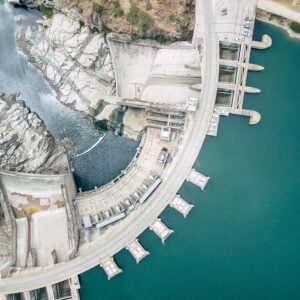One of the core documents required by ISO 55001 – the global standard for Asset Management – is an Asset Management Policy. In this article, we will discuss the types of things that this policy should contain, how long it should be, and, most importantly, how you should go about developing this for your organisation.
This is the third in a series of 13 articles on Implementing ISO 55000.
Articles in this series
ISO 55001 and the asset management policy
A good place to start when considering what to put in your Asset Management Policy is by considering the mandatory requirements of ISO 55001.
Definitions
Before starting, it is important to note two key definitions which are contained in ISO 55000:2014.
- A “Policy”, is the “intentions and direction of an organisation as formally expressed by its top management” (ISO 55000:2014 Section 3.1.18).
- “Top management” is, in turn, defined as being “person or group of people who directs and controls an organisation at the highest level”.
Alignment
First, ISO 55001:2014 states (in Section 4.3) that the scope of the organisation’s Asset Management system should be aligned with the Asset Management Policy. By way of a reminder, as far as ISO 55000 is concerned, the Asset Management System is the management system for managing the organisation’s assets. It is used by an organisation to plan, coordinate, control, execute, monitor and improve the activities associated with managing assets. It is not just a computerised information system, although this may form part of an organisation’s Asset Management System.
In addition, Section 5.2 of ISO 55001:2014 requires that the policy is aligned with and consistent with other organisational policies and plans (including the Strategic Asset Management Plan).
Top management commitment
Second, it is a requirement of ISO 55001:2014 (in Section 5.1) that Top Management demonstrates leadership and commitment by, amongst other things, ensuring that the Asset Management policy is established and is compatible with the organisation’s overall business objectives. Top leadership involvement in the development of the Asset Management policy is clearly important.
Asset management policy content
Third, Section 5.2 of ISO 55001:2014 has some specific requirements regarding the content of the Asset Management Policy. Amongst these are that it should:
- Be appropriate to the purpose of the organisation
- Provide a framework for setting Asset Management objectives
- Include a commitment to satisfying applicable [mandatory and legal] requirements
- Include a commitment to continual improvement of the Asset Management System
In addition, there are a number of other requirements concerning things such as:
- a requirement for the policy to be documented, available and communicated, and
- a requirement for the policy to be reviewed on a regular basis and updated if required.
Non-mandatory requirements for the asset management policy
While the requirements of ISO 55001:2014 are mandatory (at least for those seeking alignment or certification against this standard), ISO 55000:2014 (the Overview, Principles and Terminology document) and ISO 55002:2014 (the Application Guidelines document) contain a number of other items which provide guidance when developing your Asset Management Policy. These include:
- A suggestion that the principles by which the organisation intends to manage its assets are set out in the Asset Management Policy, while the approach to implementing these principles is contained in the Strategic Asset Management Plan (see the next article in this series regarding the Strategic Asset Management Plan)
- A suggestion that the Asset Management Policy should be a short statement, and need not be a separate document – it could, for example, be contained within the Strategic Asset Management Plan.
ISO 55002:2014 also (in Section 5.2), suggest that the policy commits the organisation to applying specified principles when making decisions relating to asset management, and gives some examples of the types of commitments that could be made, such as (in addition to some already mentioned earlier):
- A commitment to providing the resources necessary to deliver the organisation’s asset management objectives
- A commitment to using specified decision making processes or guidelines when making decisions about assets
- A commitment to measuring and reporting on asset and asset management performance
- A commitment to the achievement of long-term, sustainable outcomes
What should your asset management policy contain?
So putting all of this together, what are the key attributes of a good Asset Management Policy?
First, it should be short – no more than one or two pages. Consider your Asset Management Policy as being similar in nature to your organisation’s Safety Policy or Environmental Policy. Typically these are one page documents that are posted conspicuously around your organisation – in the main reception area if nowhere else! Remember that the policy should provide high level guiding principles only, and the detail should be contained in other documents – most likely in your Strategic Asset Management Plan, or in other related policies, plans and procedures (we call these related policies, plans and procedures the Asset Management Framework – and recommend keeping these separate from the Strategic Asset Management Plan; for more on this please read our separate article on Developing the Strategic Asset Management Plan).
Second, the policy should be useful in providing guidance regarding asset management and asset-related decisions. If members of the organisation are unsure regarding how they should go about making a decision, then the Asset Management Policy should indicate high level principles that they should apply when making that decision. The exact principles to be contained in the policy will depend, at least to some extent, on your organisation’s industry, its overall strategy, and the environmental context within which your organisation operates. Nevertheless, there are likely to be many common elements that will apply to most, if not all, organisations (just in the same way that there are many common elements to most organisations’ Safety Policies).
Third, there are some mandatory elements that should be in any Asset Management policy. These are:
- A commitment to comply with all relevant legislative, regulatory and legal requirements, and
- A commitment to continual improvement of the Asset Management System
How should your asset management policy be developed?
At least as important as what the Asset Management Policy contains is how it is developed. As mentioned earlier, Top Management needs to demonstrate their commitment to the effective management of assets within their organisation, and one of the key ways that they do this is through the Asset Management Policy. It makes sense, therefore, that they are involved in developing and agreeing to the policy, and that this policy is subsequently signed by Top Management, or a member of the Top Management team. In this sense, the Asset Management Policy should be considered as being similar to the Safety Policy or Environmental Policy that exists at most organisations. So we recommend that the Asset Management Policy is developed, if possible, by the Top Management team in an interactive workshop or workshops. For this workshop to be effective, the Top Management team must have a fundamental understanding of the key principles and scope of Asset Management. In fact, the Institute of Asset Management, in its Asset Management Competences Framework, includes a specific course for Senior Management (Course A2), aimed at providing them with this overall understanding to a level that permits them to make an informed contribution to the development of this policy. Assetivity, as an endorsed IAM trainer, is able to deliver this course, so if you are interested, please let us know.
As anyone who has been involved in these types of workshops before will know, getting alignment and consensus amongst Senior Managers regarding the content of this type of document is not easy, and can often take longer than you might expect. One of the casualties of gaining consensus, frequently, is brevity – and so, while we recommend that the Asset Management Policy be no longer than one or two pages, if a longer document is required in order to gain consensus and commitment from Top Management, then be prepared to accept that gaining this consensus and commitment is much more important than the document length.
It is also important that the structure and length of your Asset Management Policy is consistent with other policies (such as Safety Policy and Environmental Policy) that your organisation may have. This sends a consistent message regarding the importance of all of these policies – so strive to ensure that the length and level of detail contained in your Asset Management Policy is consistent with these other policies.
We have an asset management policy, now what?
Once you have developed your Asset Management Policy, it is absolutely vital that it is communicated to the rest of the organisation, and that it forms the basis on which Asset Management decision making is founded. So, be prepared to post it visibly around your organisation – on meeting room walls, notice boards, on your intranet, in reception areas. Also make sure that its existence and its meaning are communicated to all personnel. Initially, this could be via team briefs, a short video presentation as part of a regular communication meeting or many other ways – but don’t forget to include coverage of your Asset Management Policy in your induction process for new employees. And in all cases, make sure that people understand what the implications of this Asset Management Policy is for them, and the decisions that they make that have an impact on your assets.
Our asset management policy template
For those that may be interested, we have prepared a sample, editable, Asset Management Policy template which can be downloaded from here.
Looking for further training in ISO 55001 certification?
We offer a range of asset management courses, some of which specialise in ISO 55001 deliverables. If you are interested in reading more about our courses, you can do so by following the links below.
-
Product on sale
 Implementing an ISO 55001 Compliant Asset Management SystemOriginal price was: $2,275.00.$2,047.50Current price is: $2,047.50.
Implementing an ISO 55001 Compliant Asset Management SystemOriginal price was: $2,275.00.$2,047.50Current price is: $2,047.50. -
Product on sale
 Asset Management Foundation AwardOriginal price was: $1,195.00.$1,075.50Current price is: $1,075.50.
Asset Management Foundation AwardOriginal price was: $1,195.00.$1,075.50Current price is: $1,075.50.


